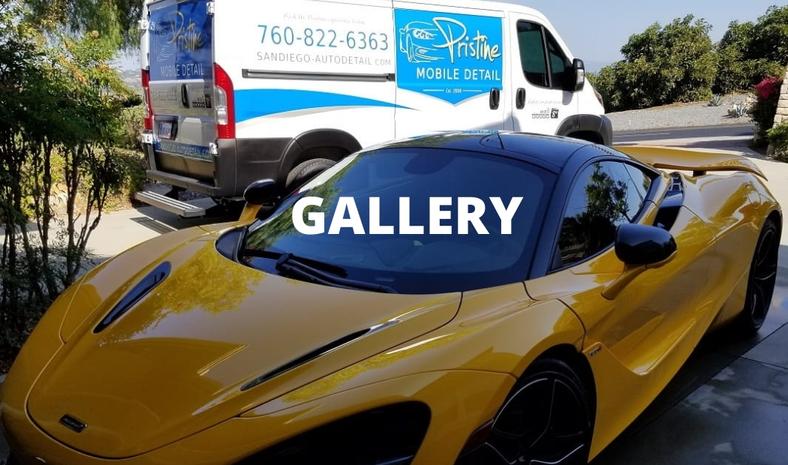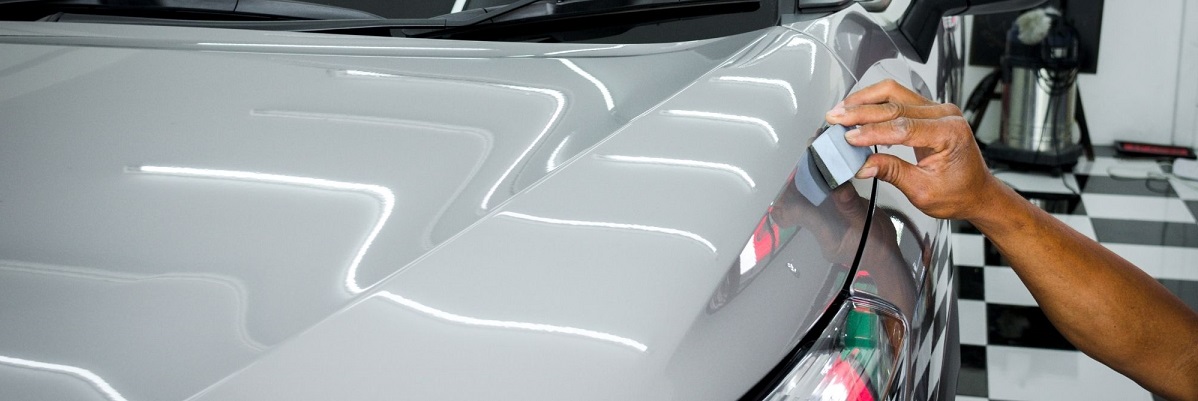
Ceramic Coating vs. Wax – The Battle of the Paint Protection Titans
You want your vehicle to look as good as new, so you wash it weekly or even daily. But sometimes, it is just not enough. You want something that offers more durable results. So the next step of automotive care is paint protectors – wax and newly introduced ceramic coatings.
Statistics for 2016 alone says that vehicle owners spent over $10.2 billion on car wash and external automotive paint protection. That is a lot of money to make your precious metal friends look shiny.
In the wax vs. ceramic coating debate, we present crucial facts to help you choose the best option for your situation. That includes the budget, the daily usage of your vehicle, the amount of time you are willing to spend on the detailing, and the durability of the results.
Preserve your car’s value by making an appointment today for auto detailing.
exterior & interior detailing : odor removal : paint sealant
#1 Mobile Car Detailing San Diego
What is Carnauba Wax?
Carnauba wax is the most common substance found in car waxes. It is a natural substance found in a palm plant (Copernicia prunifera), native to Northeastern Brazil, also known as The Tree of Life. Its original purpose is to protect the palm leaves from harsh UV rays and intense heat.
It is the most common type of paint protectant sold across the globe. When raw, carnauba wax is rock-hard, non-toxic, and has a high heat tolerance – around 85oC. But the final product you purchase contains some added ingredients like colorants, solvents, oils, and other components that will make a product easier to apply.
Carnauba wax is also combined with other waxes like beeswax, paraffin wax, and Montan wax to increase pliability, ease of use, and clarity. The higher the percentage of the carnauba wax in the final product, the more durable it will be when applied.
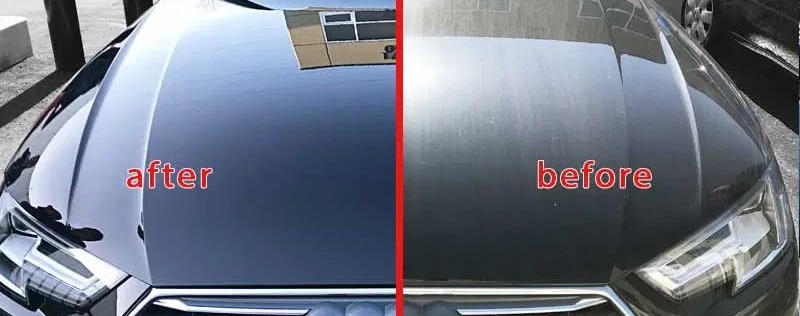
Carnauba wax is widely known for the “lotus effect” it produces. This happens because water forms into the beads and easily rolls off surfaces. This phenomenon is often referred to as ‘beading.’ It is caused by a high contact angle between the water drop and the surface. The greater the angle, the more hydrophobic properties the wax will exhibit – it must be at least 90o to classify a substance as hydrophobic.
In its purest form, carnauba wax creates a water contact angle between 107o and 124o. Therefore, it is put in the middle to the upper level of hydrophobic classification.
The yellowish tinge of the carnauba wax enhances the warmth of the red, yellow, and orange colors paintwork. It can also contain additional coloring to add some depth and glow, especially to the darker colored paintwork.
When it comes to wax application, these steps must be taken to ensure the best results:
- The vehicle must be kept out of direct sunlight, somewhere where temperature control is available. The recommended waxing temperature is between 60o and 80o.
- The next step is the application of the wax with the applicator pad using a circular motion.
- Then it needs time for the wax to haze; it usually takes 5-10 minutes.
- Waxing-off is the final step, removing the excess wax and polishing the vehicle. Again, using a high-speed electrical buffer saves a lot of time.
When the wax is applied to paintwork, it hardens on the surface. Still, it does not penetrate the microscopic peaks and valleys every topcoat is made of. These microscopic imperfections need to be filled with products to be truly protected from environmental exposure.
Advantages of Waxing
- It is simple to use but requires a lot of time. However, it usually does not need professional help, although it is always advisable to hire a car detailing service for the best possible result.
- In terms of environmental-friendliness, the carnauba wax is a natural substance; it offers value over completely synthetic alternatives.
- It is highly accessible, able to meet the demands of the common car owners, enthusiasts, and collectors.
- Car wax has good heat resistance properties, so it will not wear out due to excessive heat.
- Its water-resistance we described in the previous section.
- It is a more affordable option than others, fits easily in every budget – although you get what you pay for.

Disadvantages of Waxing
- It requires a frequent re-application; it needs to be reapplied every 4 to 6 weeks to ensure the continuous protection of your paintwork.
- The process needs time, energy, and finances to prepare the vehicle appropriately. You need to wash it first, remove the old wax build-up, completely dry it, apply, and then buff it.
- The purchasing process can be a bit confusing. Some wax brands advertise their products as 100% carnauba wax, but it is misleading. You cannot use the carnauba wax in that state due to its hardness. This percent refers to the wax ingredient itself.
Carnauba Wax vs. Synthetic Wax
Synthetic car wax is a chemical polymer mixture designed to protect the paint from environmental pollutants. Unlike carnauba wax, it comes in paste, liquid, and spray-on options. The results are not as shiny as the carnauba wax, but they can provide more profound and longer-lasting protection.
Perfect for those vehicle owners who do not have time to re-coat their vehicles often but decided the waxing is the right option for them.
Carnauba Wax vs. Sealant
Paint sealants are the next step in paint protection. They are made from synthetic polymers that allow them to last longer than wax. As a result, the protection against harmful UV rays and common contaminants lasts from 4 to 6 months.
It provides a deeper depth of paint, has very good hydrophobic properties, resists the collection of debris and dirt, making it easier to wash and dry the car.
The sealant application is easy but also requires vehicle preparation. Sometimes it is advisable to apply a clay bar treatment as a part of the preparation to ensure even the smallest particle is removed.
Then comes the process of the sealant application. Using the microfiber application sponge, the product is rubbed on the paint surface in a vertical or forward pattern, avoiding circular motion because it can result in paint swirls. The optimal results are achieved in applying the product in a 2×2-foot section.
When the application is made and dried, the paint surface needs to buff with a microfiber towel or electric polisher.
It can be combined with polishes and waxes, so many people use them all in conjunction.
Prices of Waxing
The pricing of car waxing is about $75 – $130 (based on hourly work-time averages). It depends on the type and size of your vehicle, also on the package you choose.
What is Ceramic Wax Coating?
Ceramic coatings have several names:
- Ceramic sealant
- Ceramic wax
- Ceramic paint sealant
- Hydrophobic car wax
- Hydrophobic car sealant
- Nano ceramic coating
All these names refer to the ceramic-based liquid polymer composed of silicon dioxide (SiO2) and sometimes of titanium dioxide (TiO2) as an additional hardening agent.
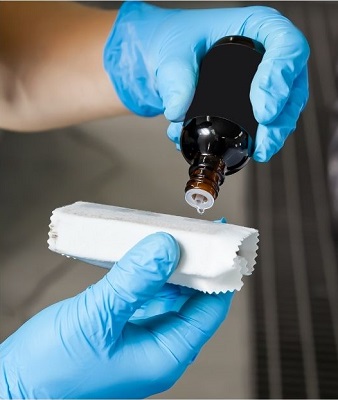
The vehicle must be adequately prepared prior to application. Still, once properly applied, it can offer protection that can last up to 2 years. However, to avoid common mistakes associated with the DIY options, it is highly advisable to hire a team of skilled professionals that will properly apply the ceramic coating.
They use commercial-grade products designed to be applied in a clean-sphere environment and have the appropriate equipment. Once being applied, the coating needs to cure in a temperature-controlled facility from 3 – 5 days, depending on the paint’s condition.
Advantages of Ceramic Coating
- Protection from UV damage, oxidization, and rust
- It provides a shiny finish, something like candy gloss
- It offers protection from minor scratches
- It is cost-efficient in the long run, saving you money on constant waxing
- It is a semi-permanent option, lasting for about 2 years
Disadvantages of Ceramic Coating
- More expensive than natural or synthetic waxes
- It is time-consuming; your vehicle may be out of order for an extended period
Prices of Ceramic Coating
Our 21 Point Wash with Ceramic Spray Sealant for cars or small SUVs costs $125-$140, while SUVs’ average prices are $140 – $160.
Exterior Detail with Ceramic Sealant and Claybar Treatment for cars and small SUVs costs $225, while SUVs cost $275.
The prices are based on hourly work-time averages, with no extra charges.
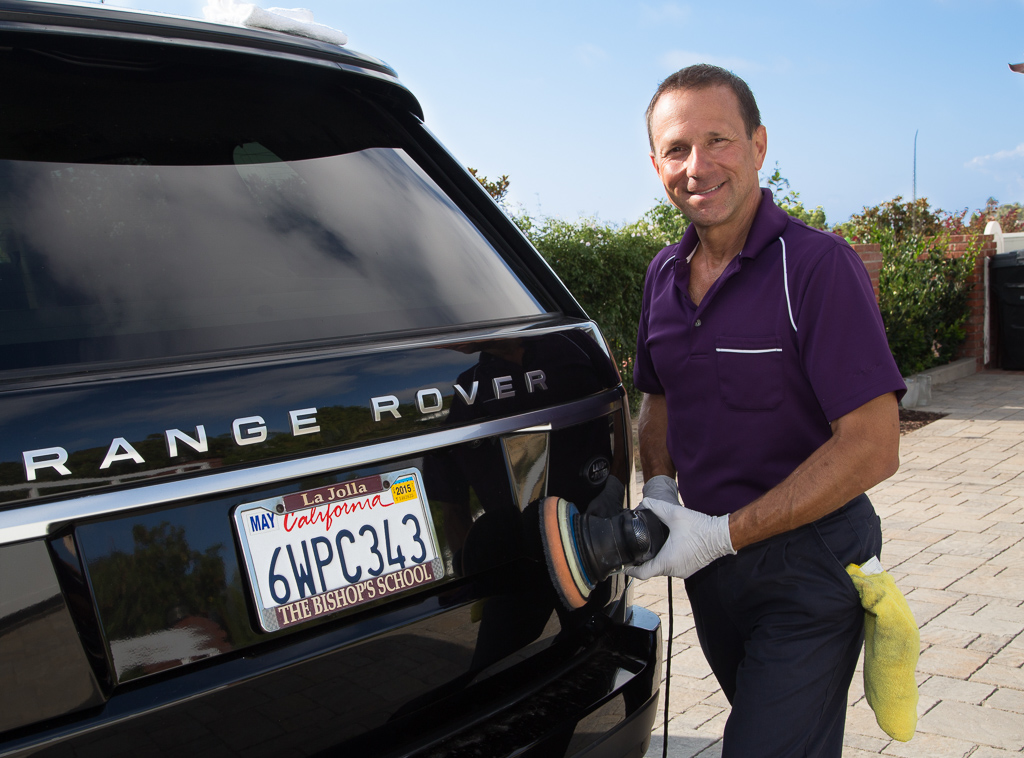
Wax vs. Ceramic Coating: The Final Verdict
Using some of the paint protectants (either car wax or nano-ceramic coating) is vital to keeping your vehicle protected from various kinds of pollutants and exposure. The choice depends on your personal preference, budget, how much time you want to spend in maintaining your car, and how the vehicle is going to be used.
A car wax allows you to enjoy the entire detailing process if you choose a DIY option and is maybe the better option for car enthusiasts. But if you simply want to protect your “daily driver,” a highly durable hydrophobic car wax is the right thing.
The regular cleaning and maintaining of your vehicle will undoubtedly extend the life of the coating used; it is a job for some and a passion for others. Although car wax has its advantages, the modern Nano ceramic coatings are the superior solution car owners have been searching for for a long time. In addition, it is the only paint protection (besides a paint protection film) that is supported with a warranty by the manufacturer.
It is evident that they last longer, simplify the cleaning process, and offer better protective properties.
The Best Car Detailing in San Diego
We offer premium protection from UV rays, salty air, bird droppings, and other contaminants.
Michael Dreebin’s clients are his main priority. With the guaranteed mobile services, you will experience the best ceramic coating installation in san Diego. Pristine Mobile Detail offers the highest quality products together with suggestions based on the experience, leaving you the time to decide what is best for you. Do not hesitate to call us at 760-822-6363 and try out the best way to preserve the value of your vehicle.

